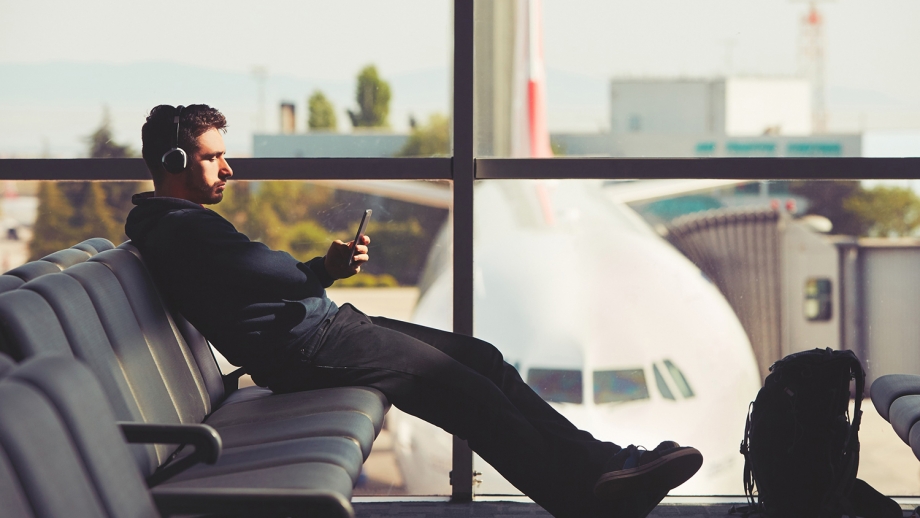Five Ideas to Use WhatsApp Business Solution with Travel

WhatsApp is the number one chat app worldwide, with over 1.5 billion users. Now, with WhatsApp Business solution, it’s a new frontier for companies looking to communicate with customers. Incorporating the WhatsApp Business solution in your travel or hospitality company provides you with the essential network you need to optimize your customer journey.
The travel and hospitality industry has experienced a deep transformation towards digital — not only because it’s cool, but because it’s needed. From airlines to hotels, travel companies struggle with the dominance of Online Travel Agents (OTAs), lower margins, saturated markets, and increased competition.
Travel companies differentiate with how dynamic and personalized their customer conversations are. In the age of increased customer demands, businesses have quickly learned the value of constant, relevant, fast, and personalized conversations. These have proved to reap the ultimate rewards, such as positive customer reviews as well as improved loyalty.
Today, ancillary sales have become mainstream, travel mobile apps have grown exponentially offering a myriad of services, and information has become a real-time commodity. Despite the improvements, customer interactions have remained problematic, because whenever a hiccup happens, the traveler still has to call the contact center. And that’s where the experience falls apart: long waiting times, constant change of agents handling the inquiry or lack of written information throughout the interaction.
We all know the complexity of delivering a seamless, omnichannel experience, especially in situations of incidents. How to use an open-ended dialogue to guide, answer, and inform the customer, has stubbornly remained more theory than practice.
The use of WhatsApp Business solution can be a game-changer for a meaningful omnichannel traveler journey. Because WhatsApp is the #1 chat app worldwide, with 1.5+ billion users, it provides the network effect that companies need to bring all the customer workflows together in one place.
How can you make the most of the WhatsApp Business solution with the travel and hospitality sector? Here are a few ideas to get you started!
1. Alerts & Notifications: Reloaded
Real-time alerts have been one of the main mobile-based interactions in the past years between travel brands and travelers. Flight delays, cancellations, gate changes, and more have all been handled as a one-way, no-reply medium — until now.
While all of this information remains relevant, alerts and notifications have the power to trigger a customer response. In fact, travel and hospitality companies should expect that, after a change, delay, or incident, travelers ask for an updated itinerary, more information on a delayed flight, or alternatives to cancelled trips. Today, notifications must become two-way and conversational, to directly fulfill real-time customer service.
2. Customer Service: Get Conversational
The WhatsApp Business solution is ideal for customer service since it instantly powers two-way communications with various multimedia functions, such as text, videos, audio files, documents, etc. To make the most of the WhatsApp Business solution with your customer service, you’ll need to set up message templates (for outbound messages) and your staff has to be prepared to answer questions in near real-time.
By integrating the WhatsApp Business API to your contact center, you can reply to inquiries faster, provide travel information easily such as re-booked flights, and offer updated itineraries, offer new hotel reservations, provide early check-in, and more.
Because the conversations on WhatsApp are entirely encrypted, and more secure than any other digital channels such as SMS or email, confidential information can be handled properly in order to perform changes to a booking, or payment details for instance.
3. Concierge: Go Beyond
With concierge services, travel and hospitality companies can greatly differentiate their services. Until now, this was provided usually via native mobile apps — with low download and usage rates. Digital concierges based on a chat app like WhatsApp — which your traveler is already using! — have the power to truly differentiate your service.
With WhatsApp — the largest chat app worldwide — travel and hospitality companies can unlock new revenue by bringing the convenience that many upscale and luxury travelers crave. For example, a conversation on WhatsApp allows passengers or hotel guests to easily request information, book services without hassle, accommodate in-room requests (another pillow, please!), ask for feedback after stay, and many other possibilities.
A digital concierge service enables travel brands to handle inquiries faster, exceed customer expectations, and control the traveler satisfaction more consistently. Ultimately increasing positive reviews and loyalty.
4. Early Check-In and Boarding Passes: Upgrade
Early check-in and boarding passes are possible via quite a few different channels: such as by a website, email, mobile app, and even SMS. However, with WhatsApp Business solution, it’s even easier to handle check-ins and boarding passes, as the traveler can bypass the website or mobile app and receive the boarding pass directly on WhatsApp.
When an airline has an official WhatsApp Business Account (or WABA), shown by a green badge in the company profile, the traveler immediately knows that this is a safe, trusted channel. Hence, it’s easier to provide all the information needed: name, booking reference number, etc., and get the boarding pass directly on the chat app interface.
After receiving the boarding pass, the airline may choose to enhance the interaction even further with updated itinerary information, real-time alerts, and even take the journey towards ancillary offers.
5. Ancillary Requests: Increase Revenue
The WhatsApp Business solution has taken great effort to avoid spam, such as marketing-related messages. Hence, the typical promotional messages such as discount alerts and coupons are not available. However, travel brands can easily trigger customers to ask for additional services, boosting ancillary sales.
For example, prior to the trip an airline can send a reminder that the trip is coming up and offer to provide any information needed. When the customer responds, it triggers a 24-hour “support window” conversation that allows the business and the traveler to communicate freely. This communication may trigger add-on purchases with seat upgrade offers, additional baggage, rooms, and prices for hotel guests, and more. Additionally, travelers can respond directly on WhatsApp to confirm their purchases.
Accelerate Omnichannel Travel Engagement with tyntec
Naturally, omnichannel communication goes beyond the WhatsApp Business solution, and many of the channels used today will continue to be used. SMS, RCS, email, voice-based contact centers, and more, still add value to the customer journey. However, as more than half of consumers prefer chat apps for business conversations, the WhatsApp Business solution can easily become a core channel in your customer engagement strategy to drive more customer satisfaction and brand awareness.
We at tyntec can make this journey fast and easy for you. As an official WhatsApp Business solution provider, tyntec guides you through the entire process — while providing a GDPR-compliant, secure, feature-rich, and reliable access to the largest chat app globally.
Are you ready? Get started by filling out the form here.
Alternatively, learn more with our additional resources:
